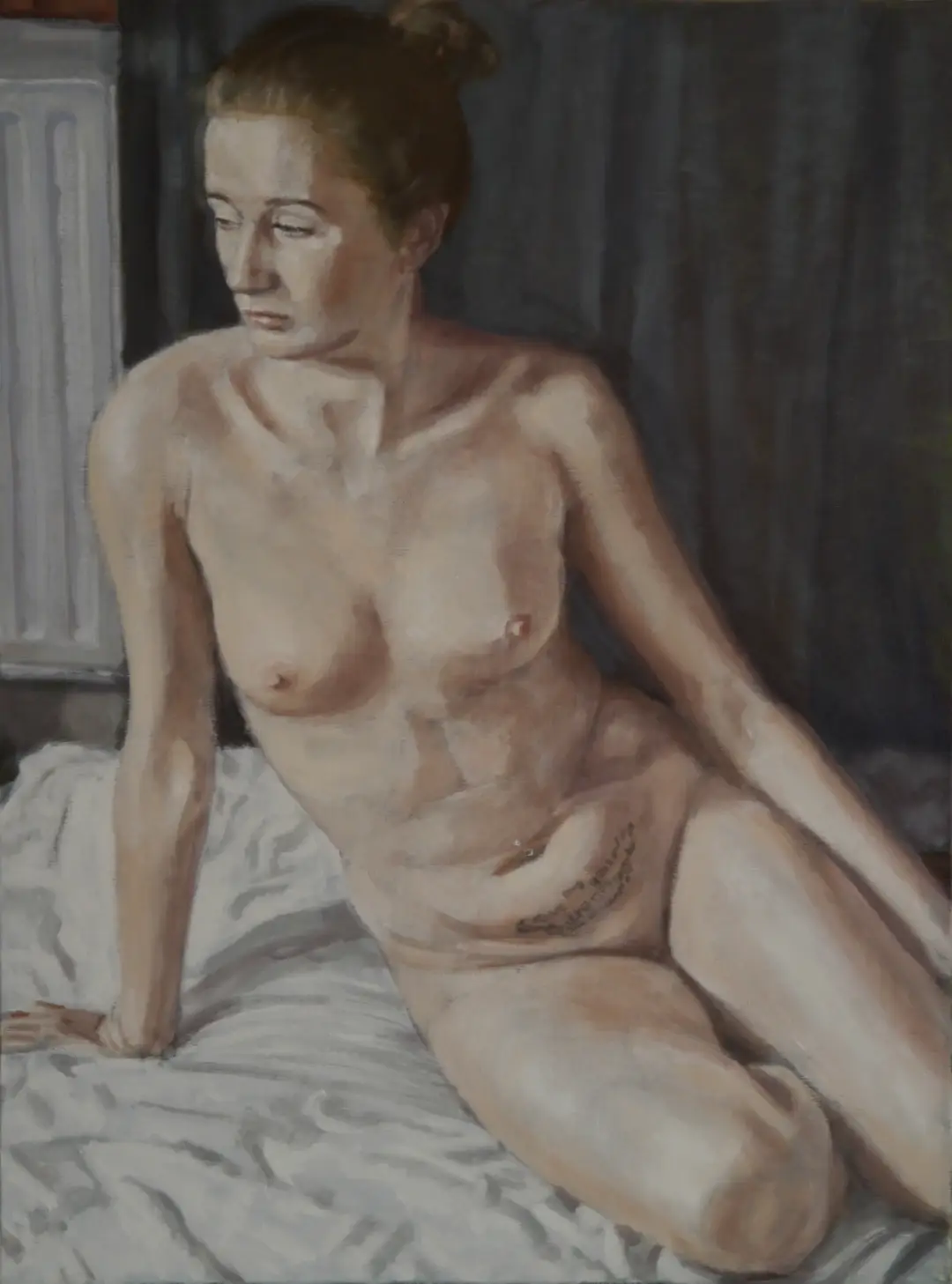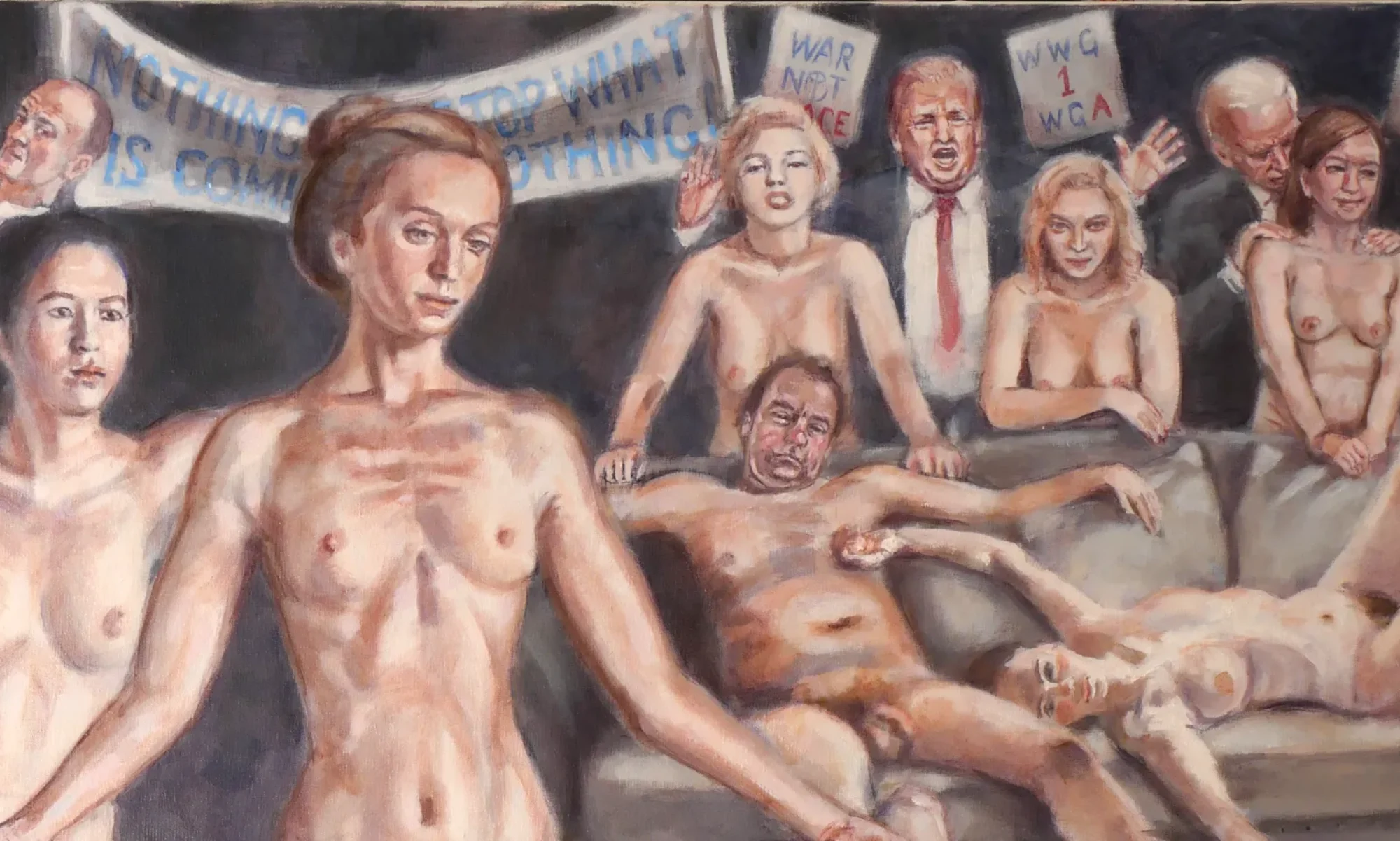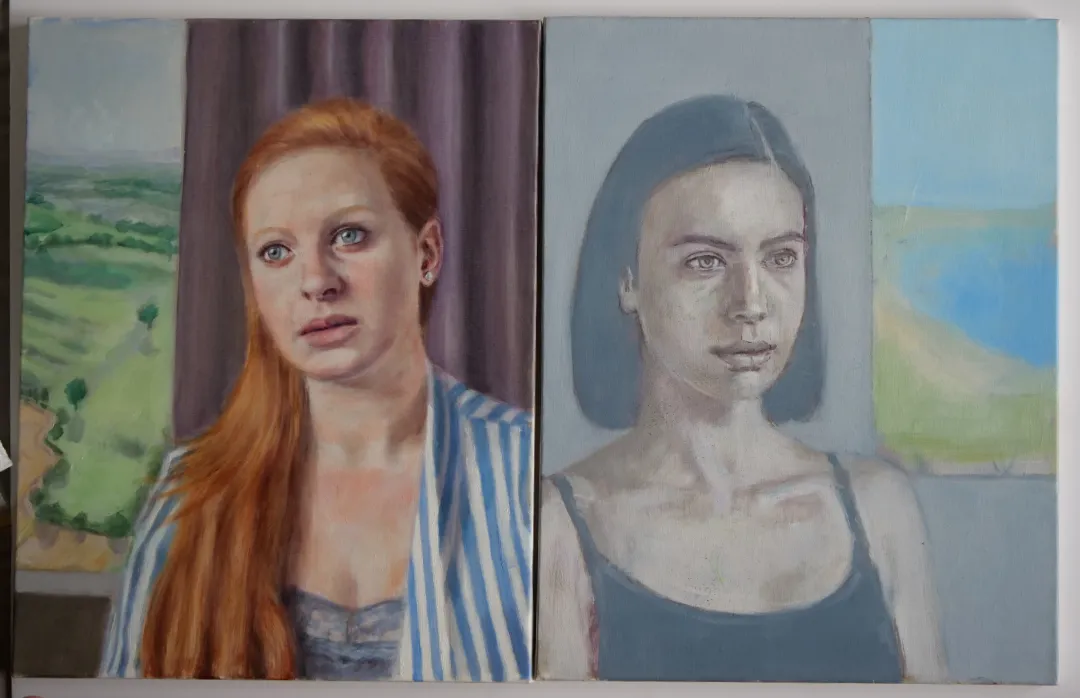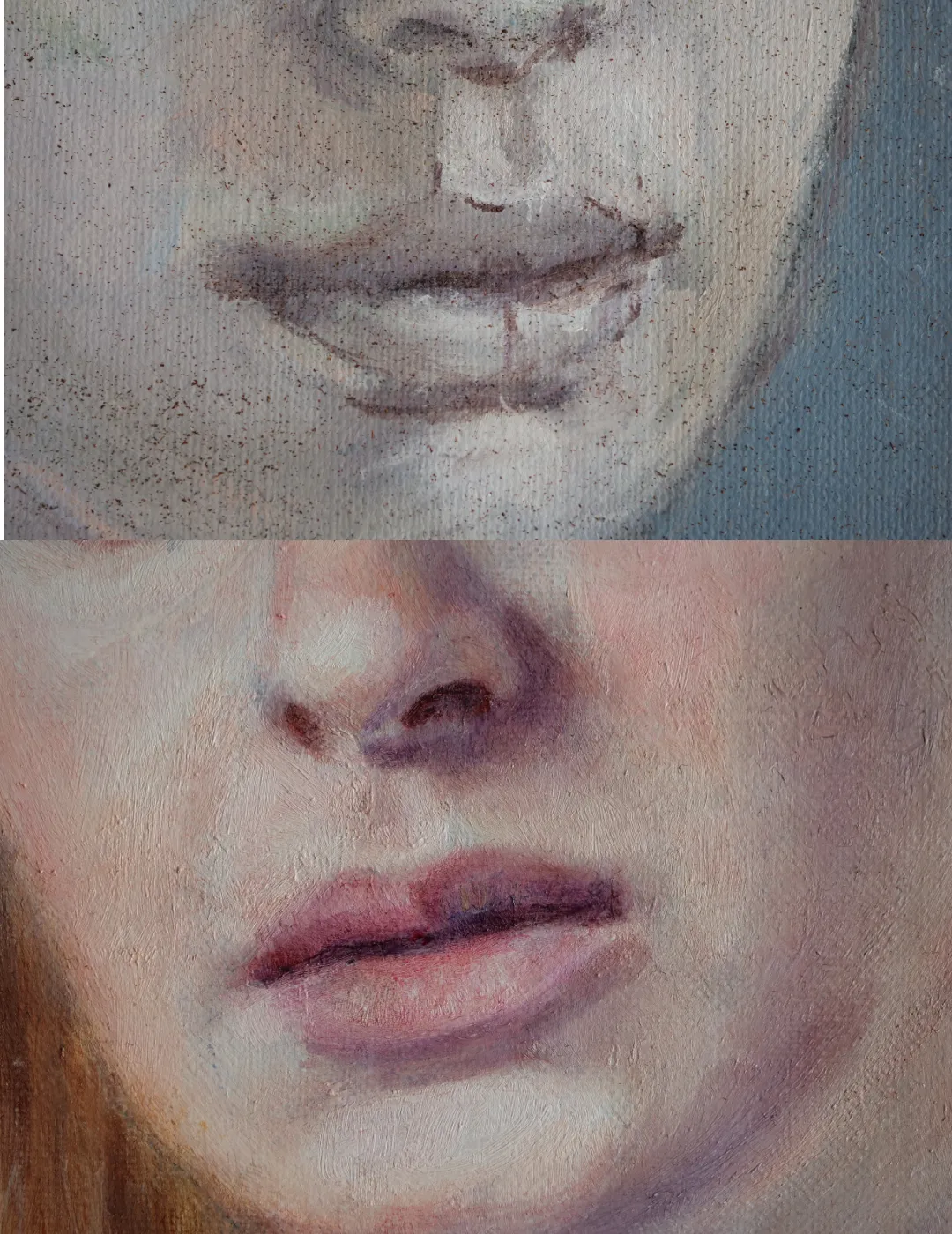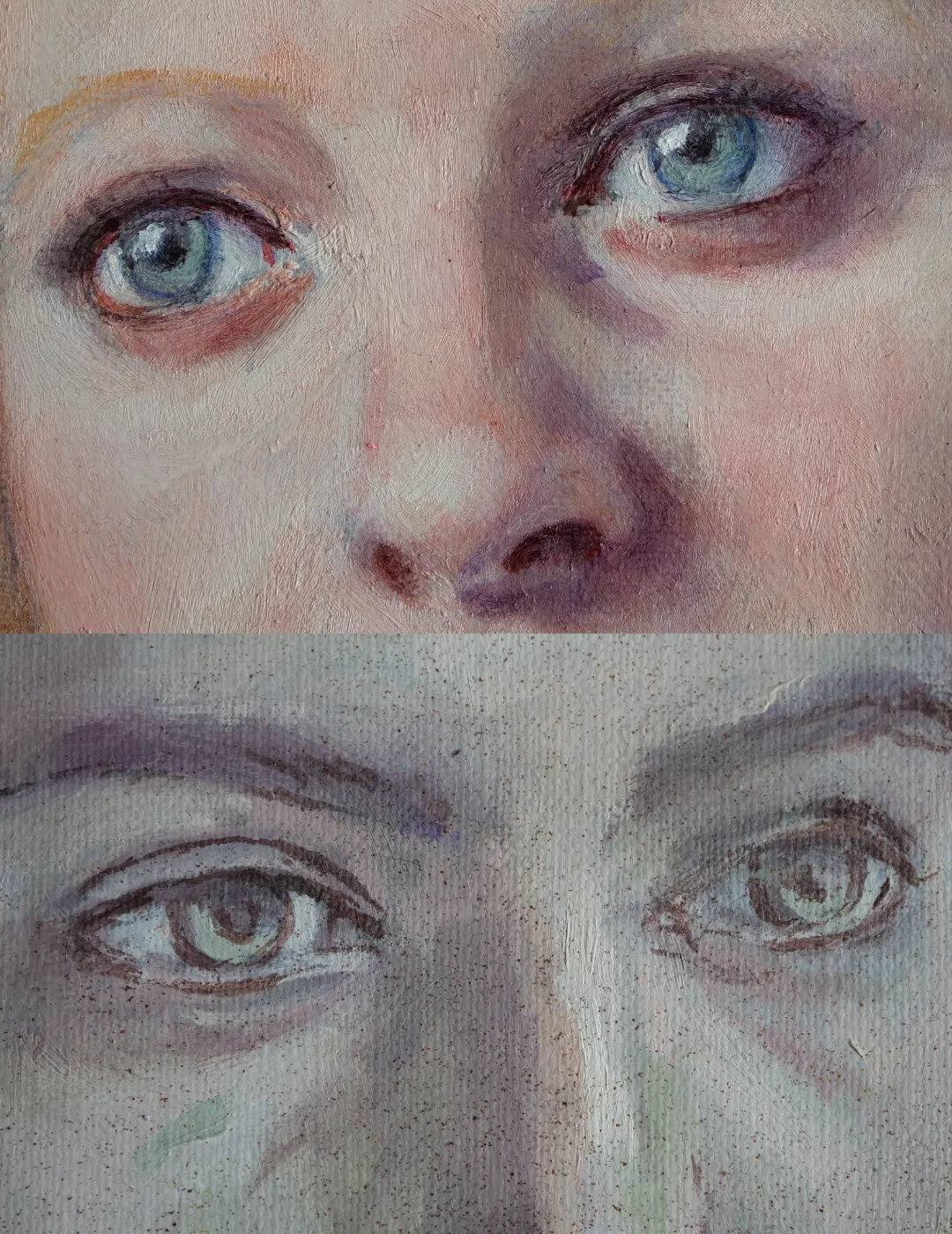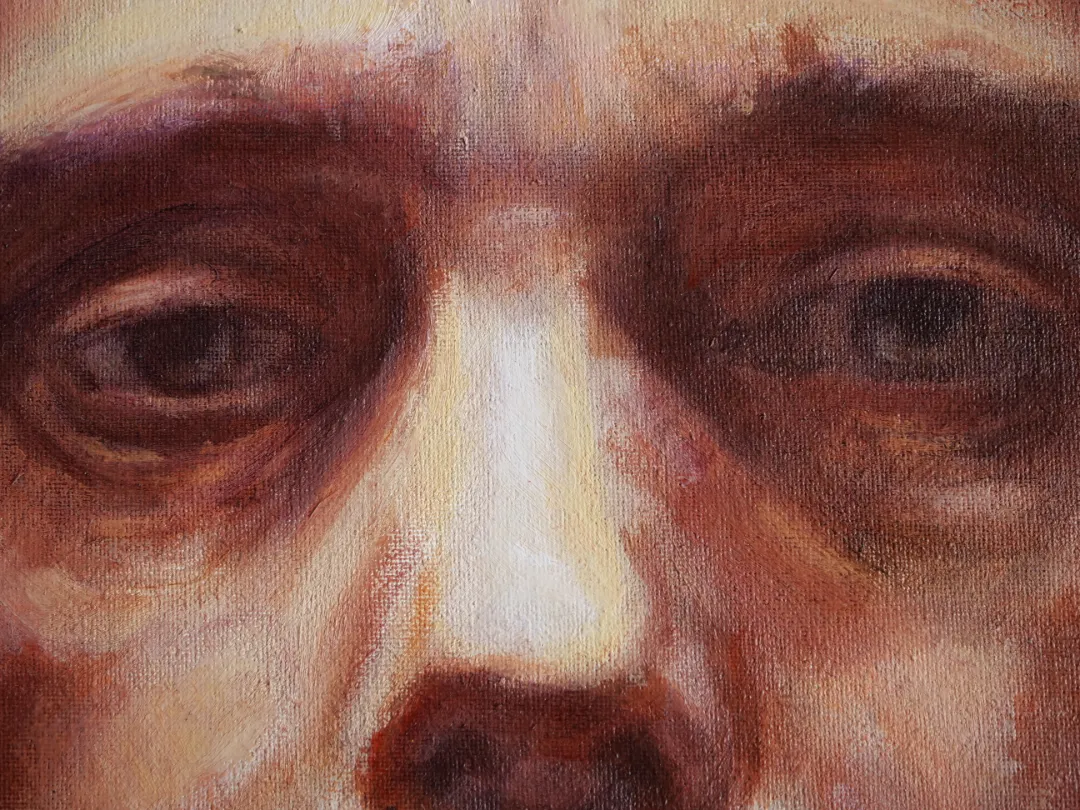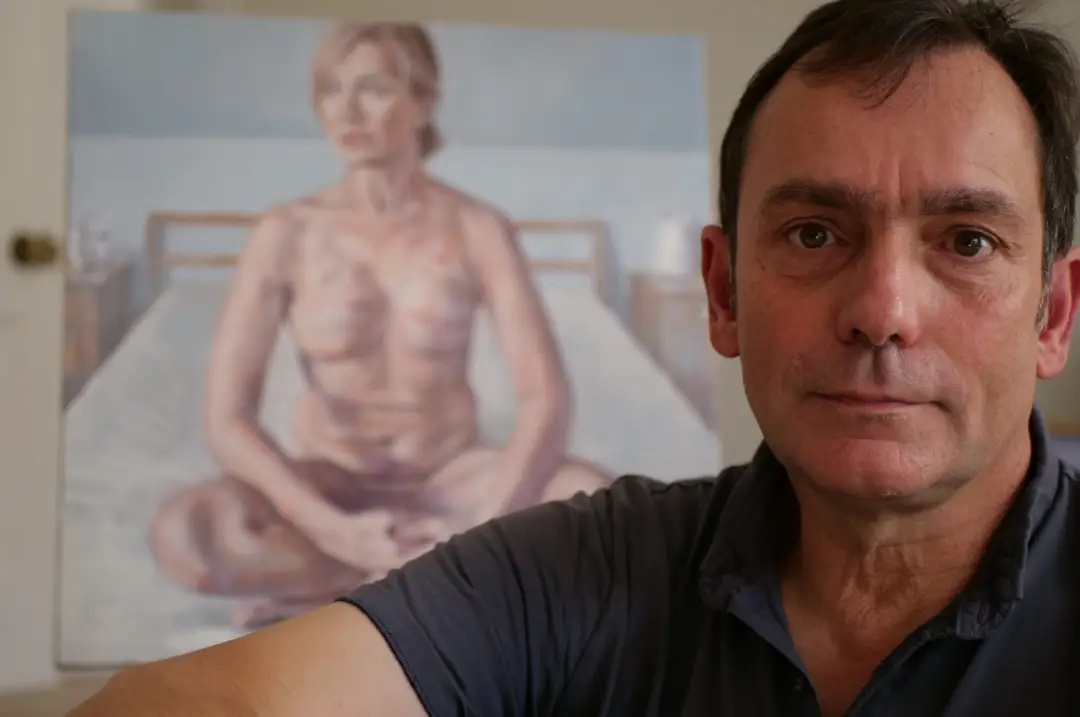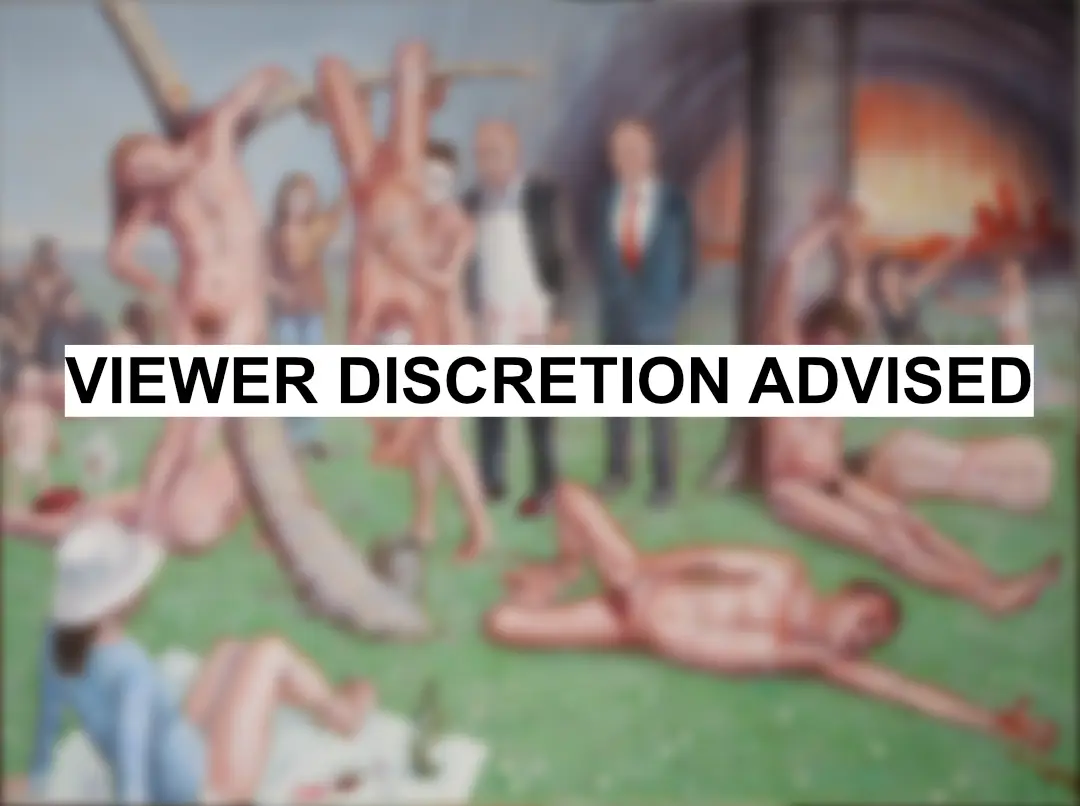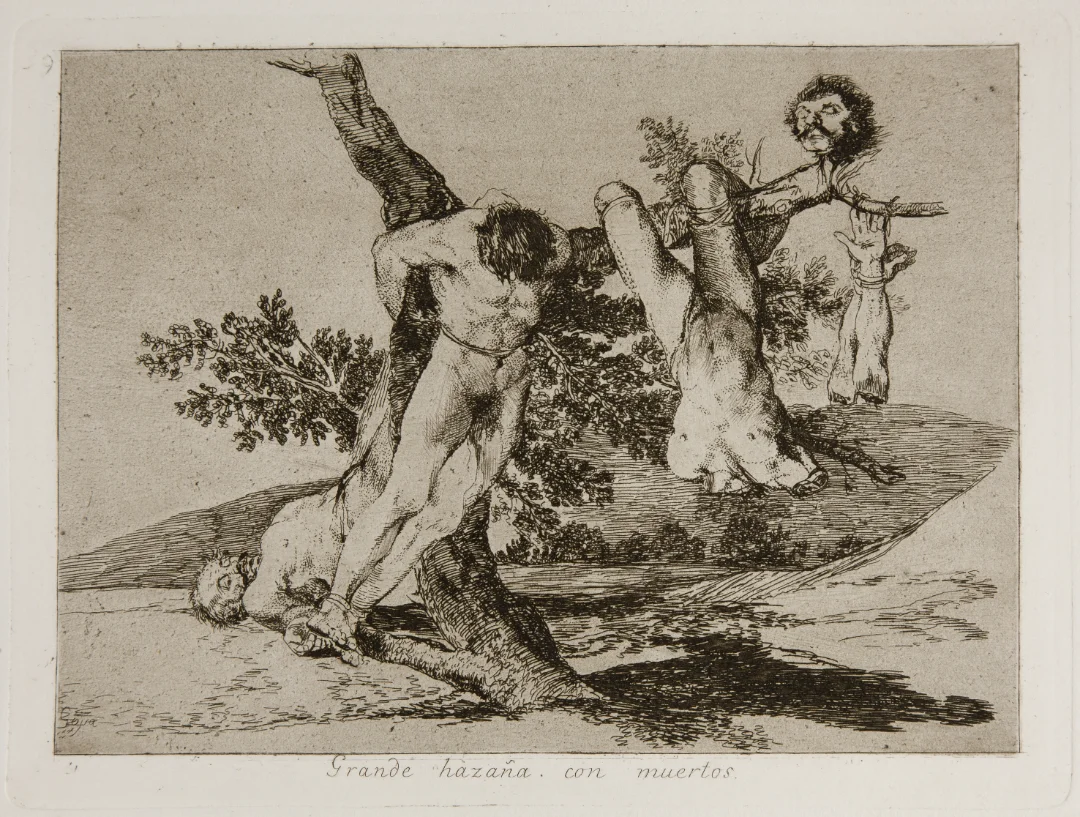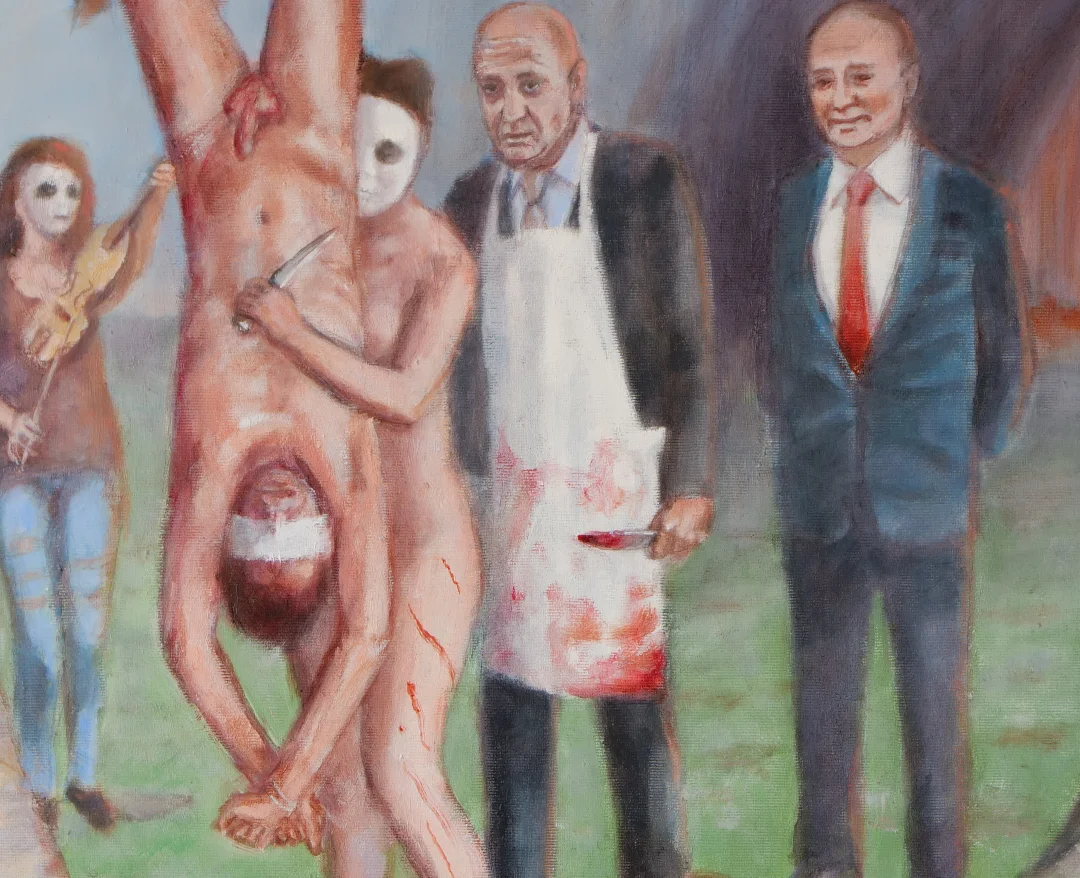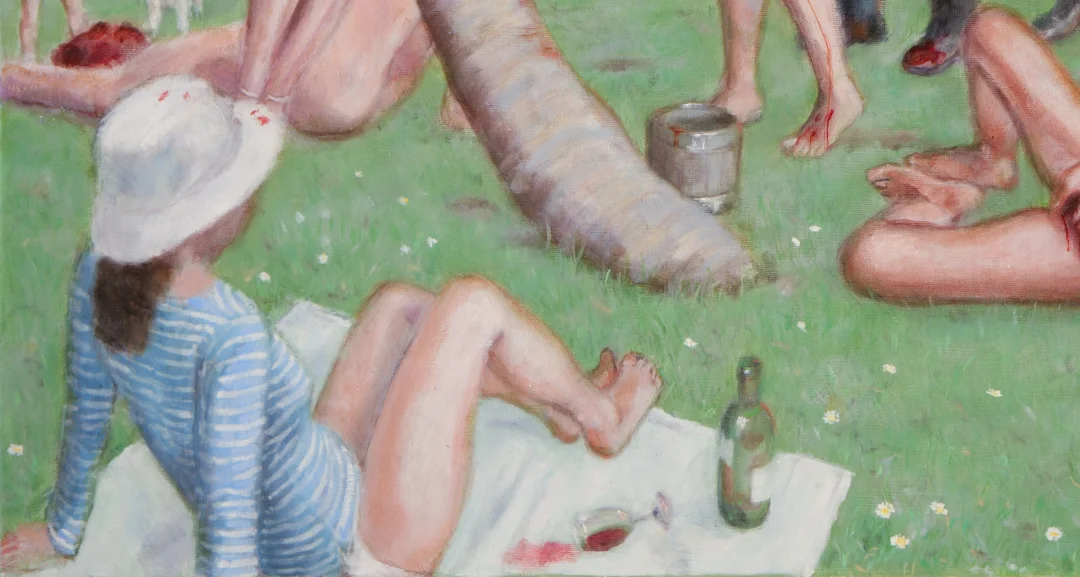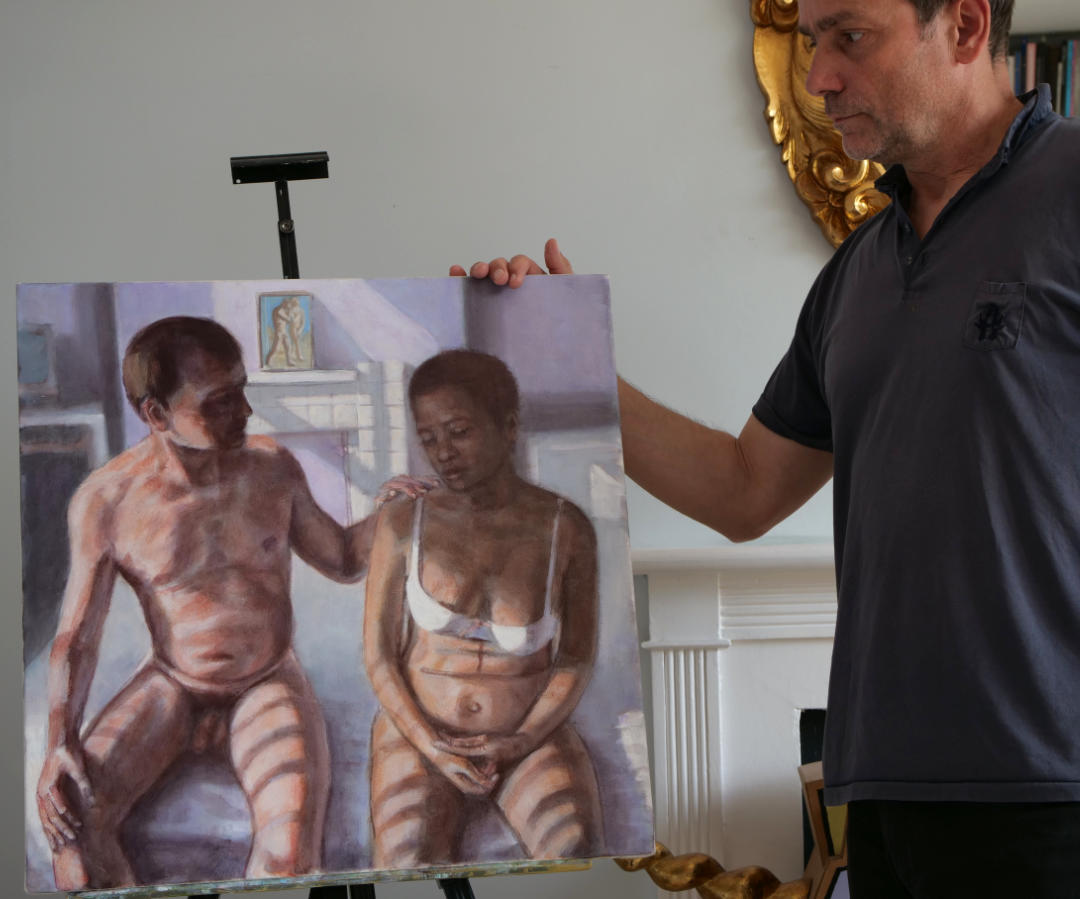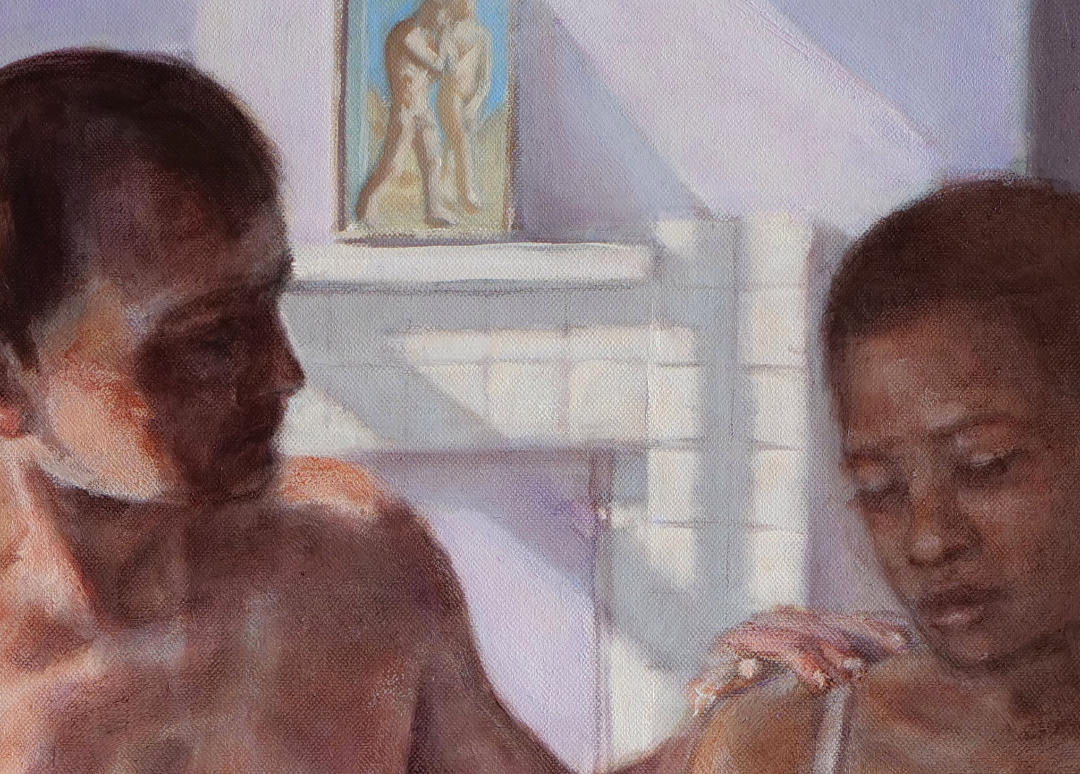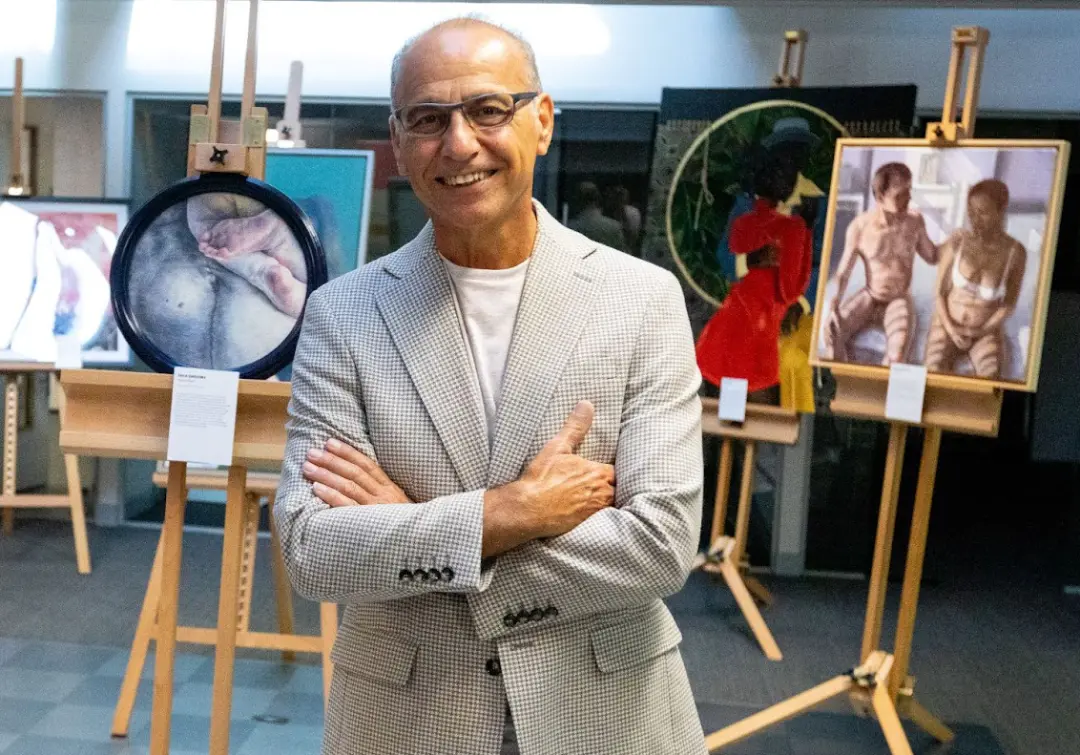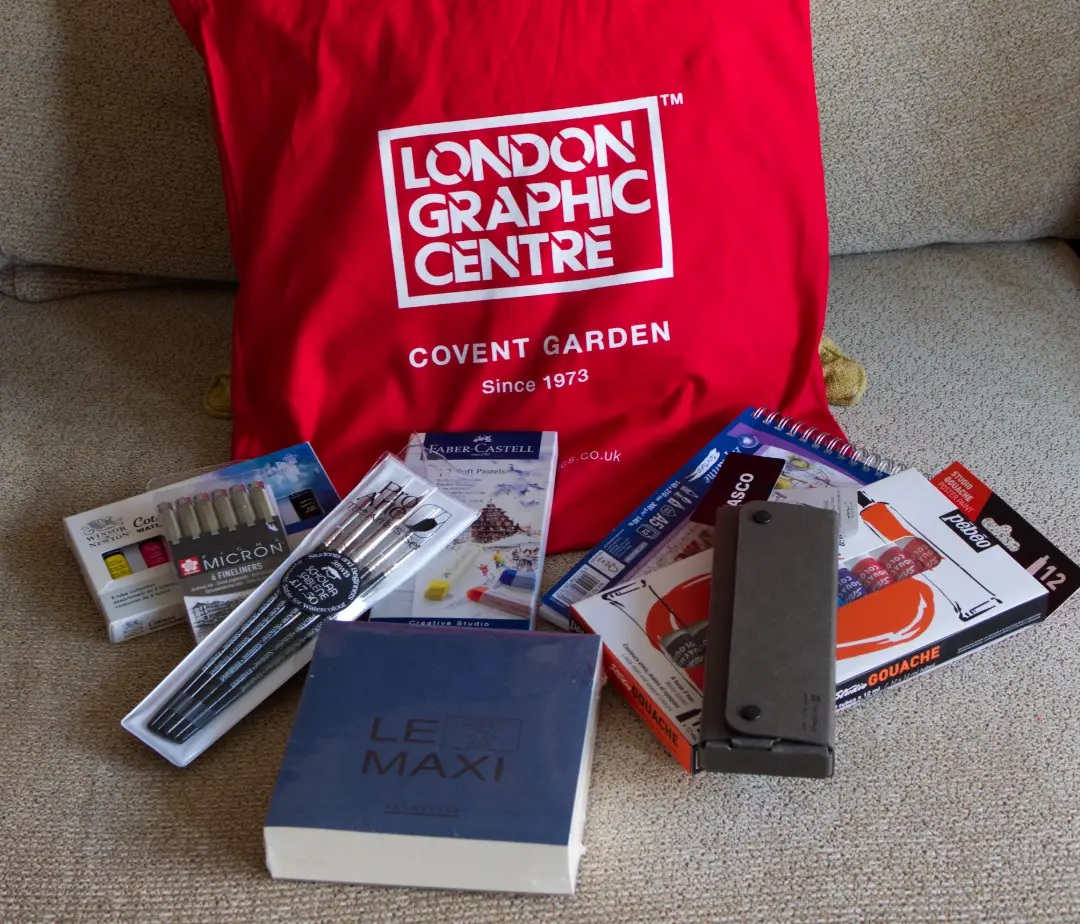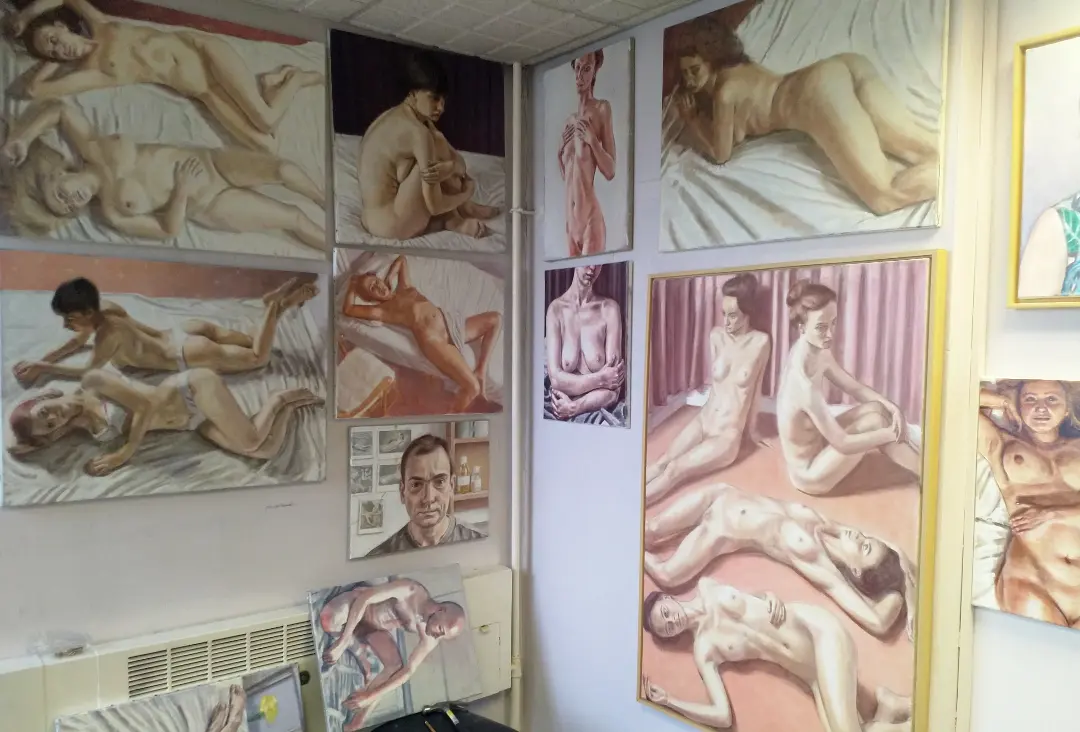
So, why do I paint nudes?
Why do I feature nude figures in so many of my paintings, from my Relationships Series to the recent Disasters of War? It would certainly be easier to market my artwork if I just painted landscapes: no more polite rejections from venues; no shadowbans from Instagram. But no subject interests me quite as much as the human figure.
I have always been fascinated with depictions of the human form in art. Maybe it started with my early love of comics, and the idealised perfection of superhuman figures cavorting across their pages. It might have been when I first set eyes on Tintoretto’s or Titian’s glorious mythological masterpieces in the National Gallery. It was a fascination cemented by my introduction to life drawing at art school.
Sexuality
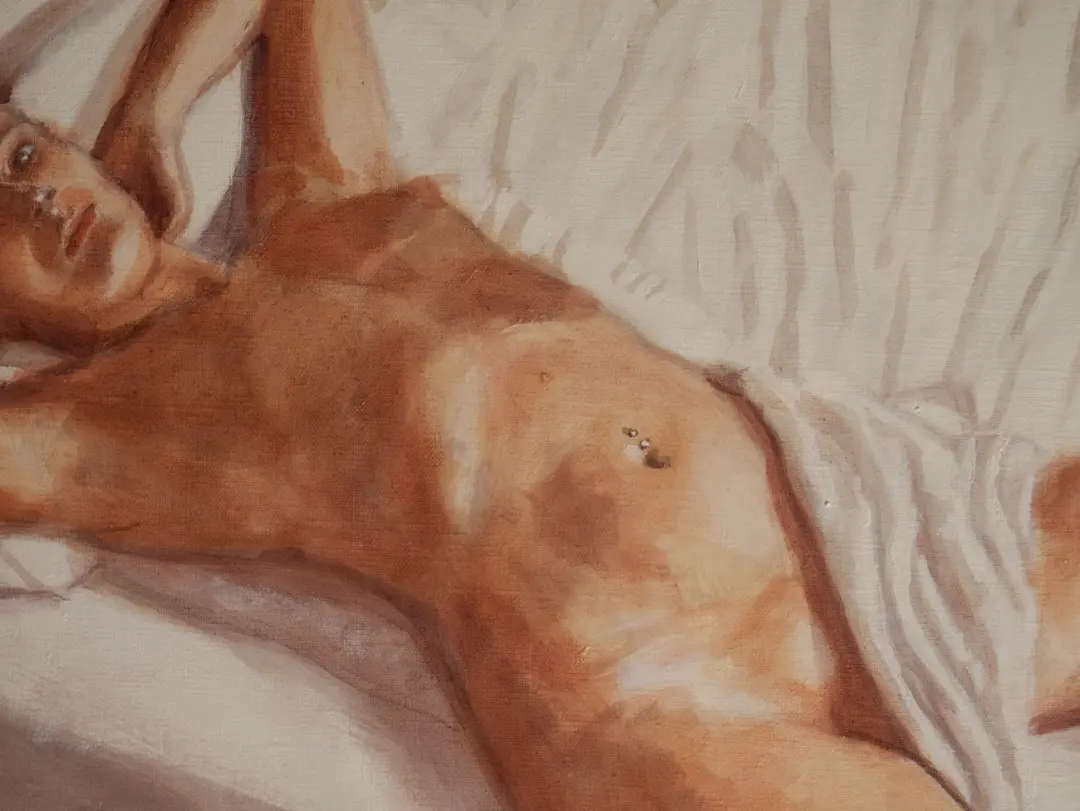
The depiction of the nude is a complicated subject in the 21st Century. It would be naive to suggest we can continue to paint the nude figure as it has always been painted. Many of the naked figures that now adorn the walls of our galleries were originally produced as thinly veiled titillation for their wealthy owners. I have started to question my own motivations for painting certain figures nude. When I work on paintings about the “male gaze” I cannot ignore the fact that, as a man, I might well have the same predilections that I happily mock in other people.
The Nude in Modern Art
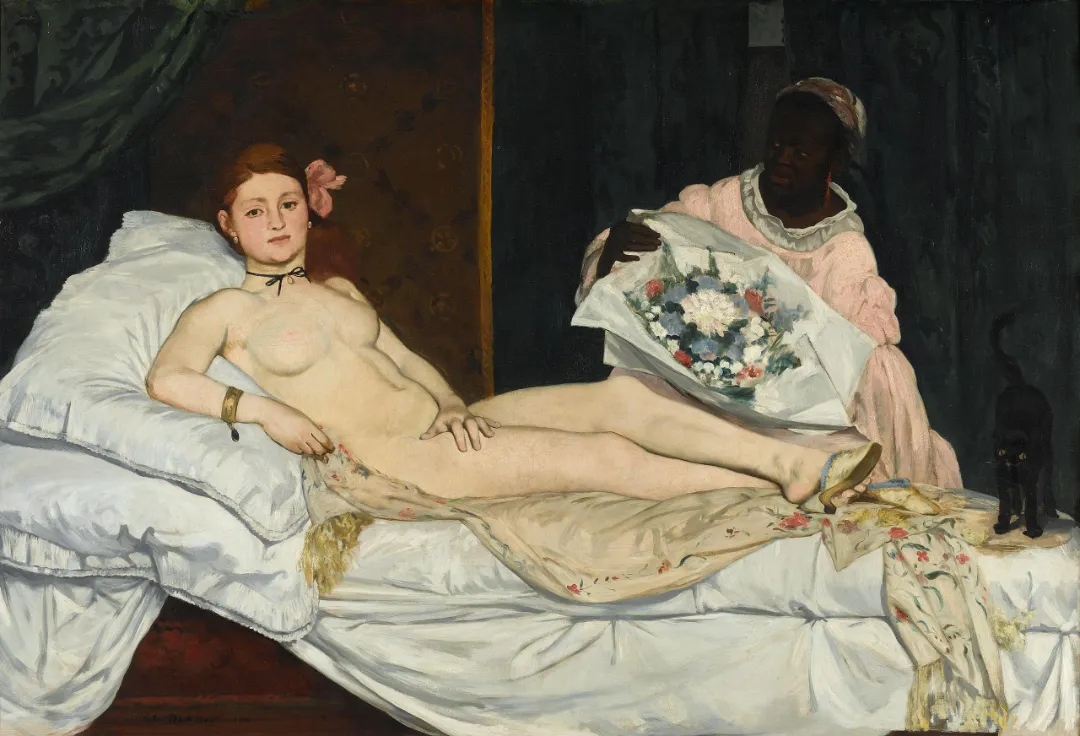
I was taught at art school that Manet’s Olympia (shown above) was one of the first modern nudes in art, and it is probably the single strongest influence on my artistic development. With no pretence of being an otherworldly goddess, this was a contemporary naked woman staring right back at the viewer. It is a naked portrait.
Manet was probably prepared for the outrage it caused, having provoked a similar scandal with his “Le Déjeuner sur l’Herbe”. I read an interesting article about that painting and the controversy it caused on Artsy.net
When looking at the nude throughout the history of western art, you have to consider that the perception of the naked body in art depends on when and where the viewer was from. The nude becomes more like a dynamic idea, and the forces that alter our perception of the nude are changing all the time. In my short career as an artist I have had to reassess my approach to the subject a couple of times.
Artists will always push boundaries
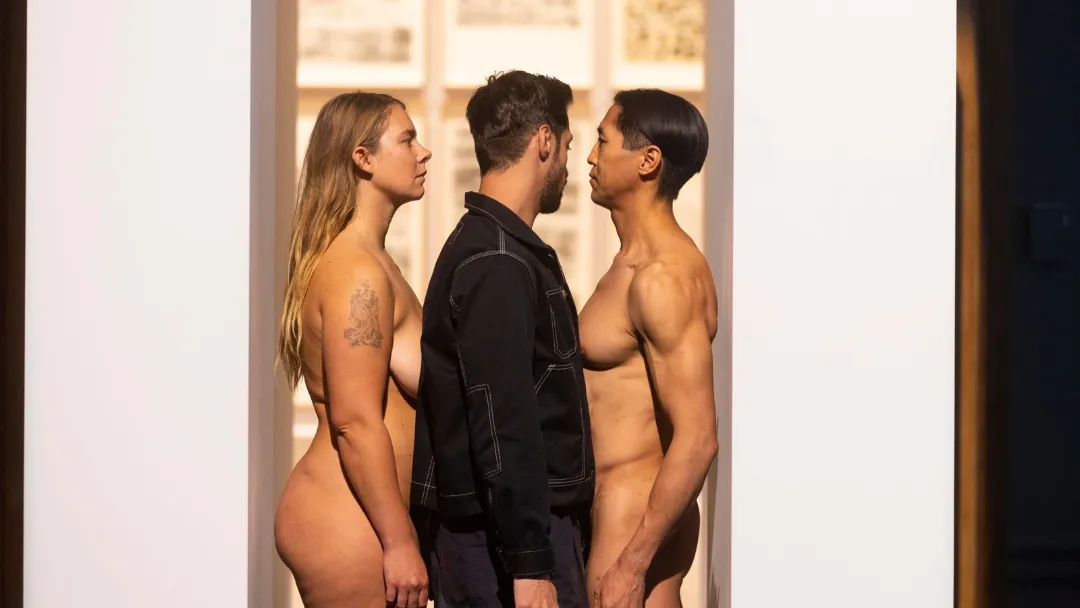
Just as Manet created a stir in the Salon, artist Marina Abramović recently caused some discomfort amongst visitors to her Royal Academy exhibition. by making them squeeze between two nude models to enter it (as in the photo above). It’s an interesting idea – remove the option for the viewer to remain a detached observer; force them to confront the nakedness of the models’ bodies. In news coverage of this long awaited retrospective, this unusual entrance has unfortunately become the headline: “Visitors invited to squeeze through naked models”
In a world awash with pornographic images on the internet, I wonder what boundaries artists have left to push in visual art. Good art should challenge us, and should test our sensibilities. But gratuitous nudity can be tiresome, and it is something I try to be alert to in my own work.
Relationships Series
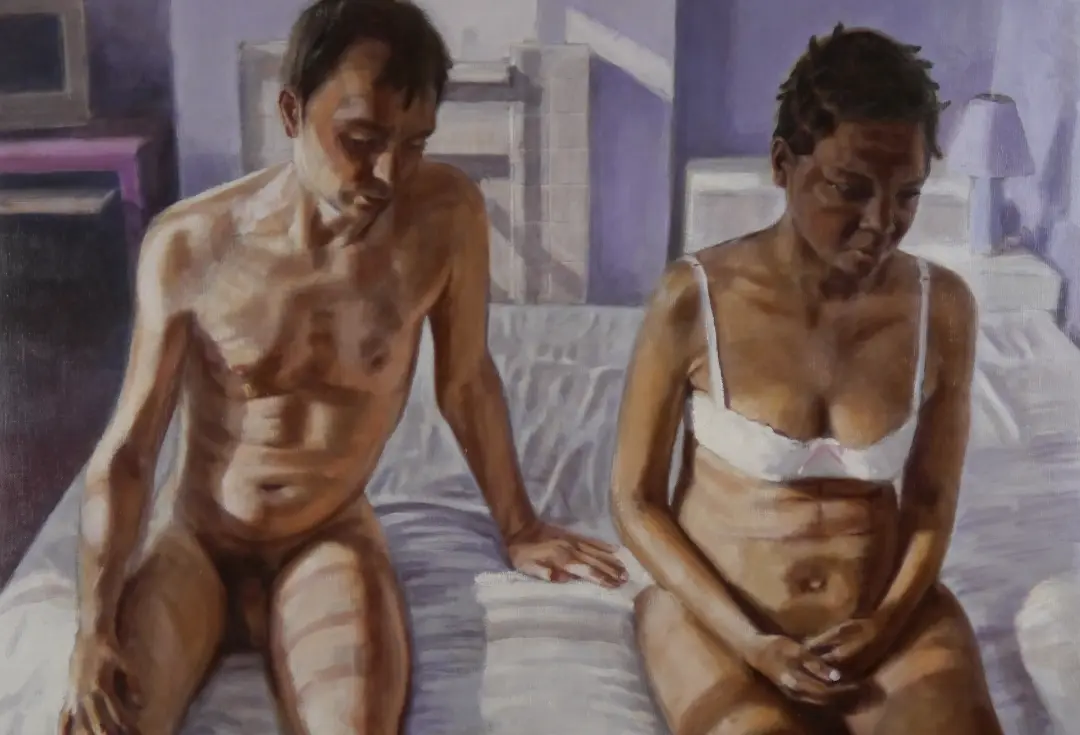
My professional art practice started with my Relationships Series paintings, where I explored the relationship between two figures within a composition in both a spatial and an emotional sense (examples shown above and below). This series began as an honest portrayal of my own relationship with my partner and developed into a broader examination of relationships in general.
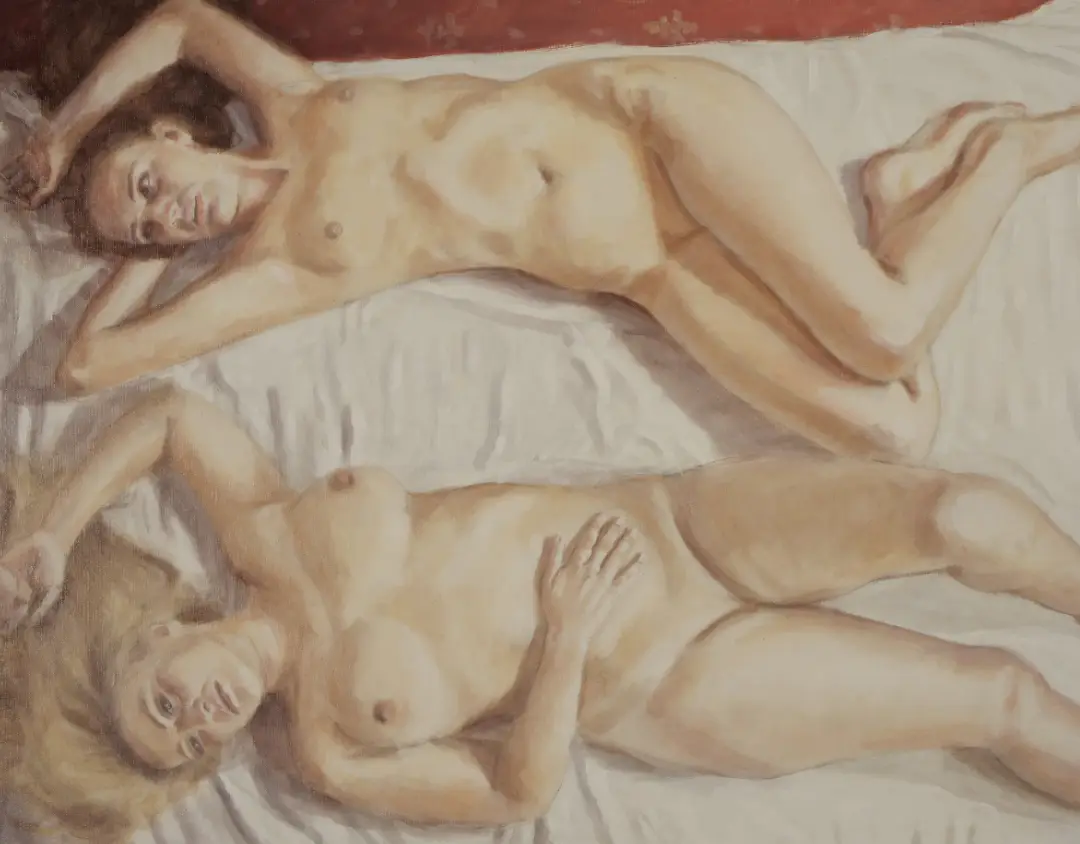
I became aware that the interpretation of most viewers was overwhelmingly sexual, which wasn’t really my intention. Although as the artist I don’t have much control over how the viewer will interpret my work (some people will always associate nudity with sex), it did give me pause for thought about how I wanted to develop this project.
You can see paintings from this series here: Relationships Gallery
Objectification and #selflove
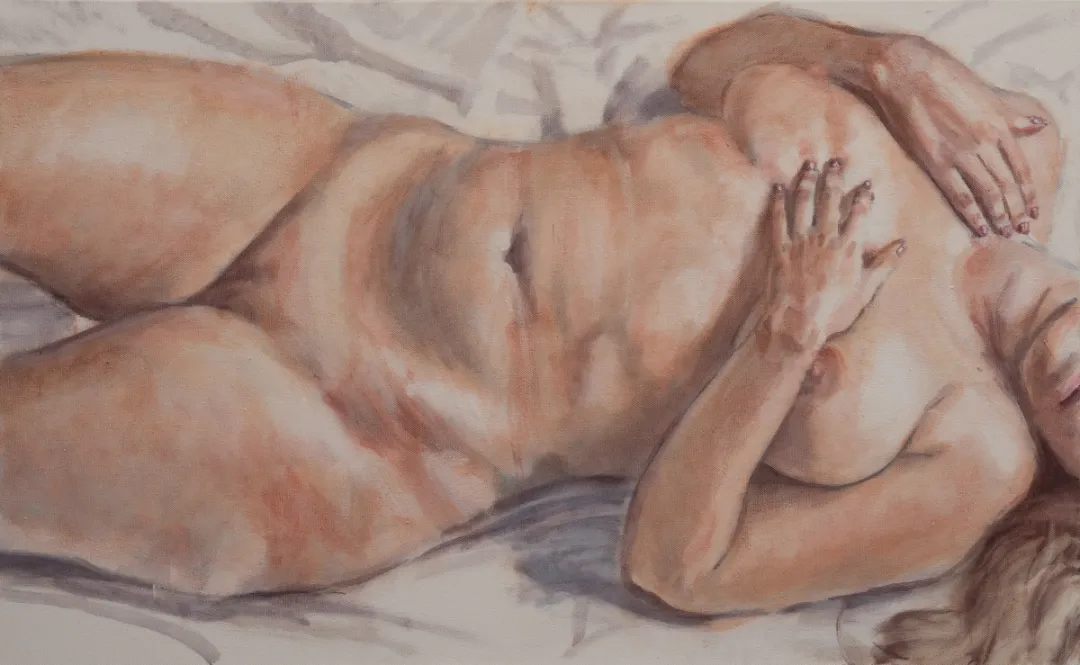
Over the years I have received various commissions for nude portraits. The main motivations for women were self-empowerment and body positivity, which I respect and admire.
I started a project called “Unnamed Portraits” which I thought might facilitate the same outcome for anyone who wanted to pose. With these artworks I would purposely crop the faces from the paintings, focusing instead on the naked body. I had a good response from potential models willing to pose for me . I suspect the readiness to pose stemmed from the same motivations as my nude portrait customers – essentially wanting to feel good about your body.
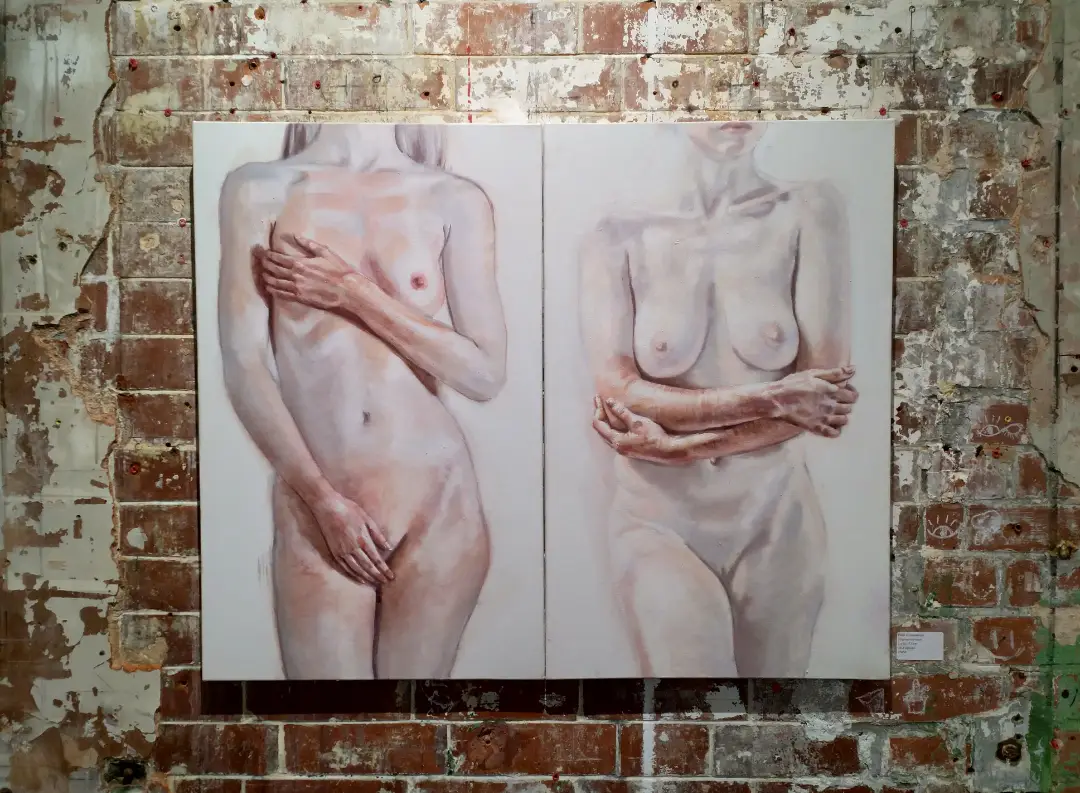
The risk with this project was that instead of enabling female empowerment, my paintings were instead reinforcing male objectification. It’s that thorny old problem of interpretation.
My biggest takeaway from this project was that I missed painting the model’s face. I have always considered my nude paintings as an extension of my portrait practice, and the headless nudes felt somewhat diminished.
#metoo and the male gaze
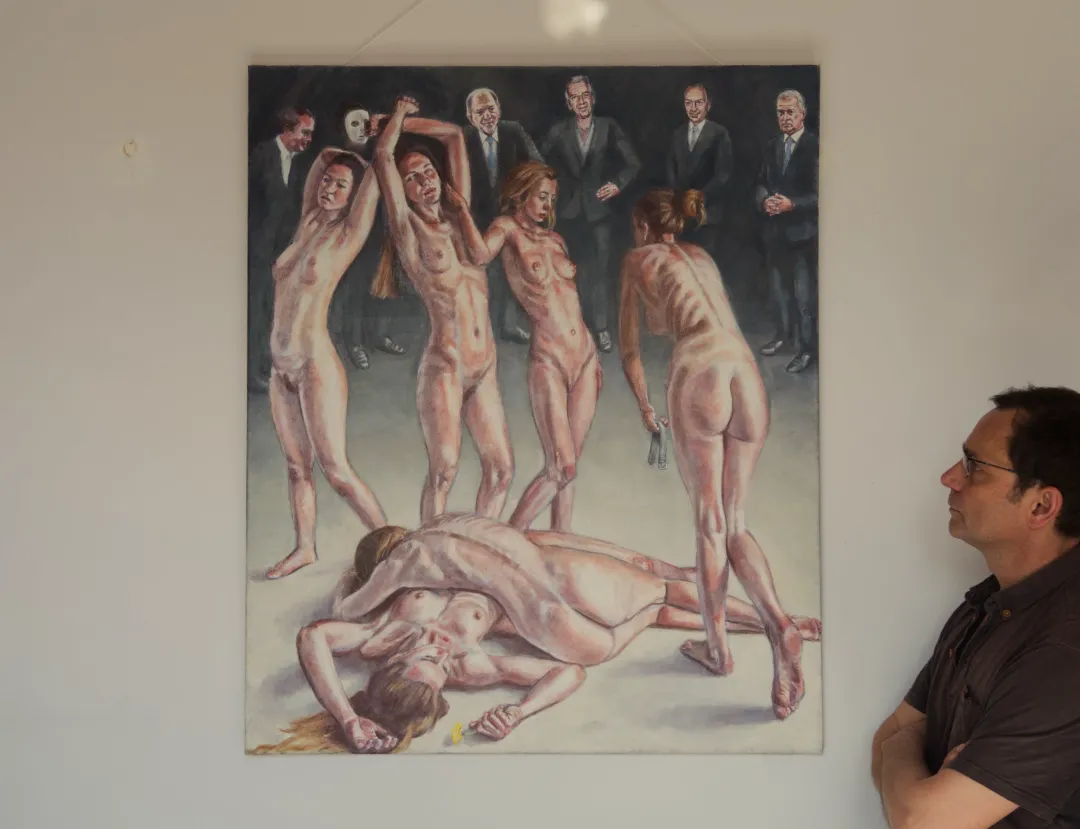
I have already written at length about my experience painting “Men in Suits”, so won’t repeat myself here. The original post is here: Men in Suits.
I mention this painting as it was a defining moment in my artistic development, where I identified the themes that I wanted to explore with my art, which I went on to develop over the next couple of years. This painting took so long to finish that the main motivation behind it – the #metoo movement – had long since disappeared from the headlines.
Jeffrey Epstein and Prince Andrew
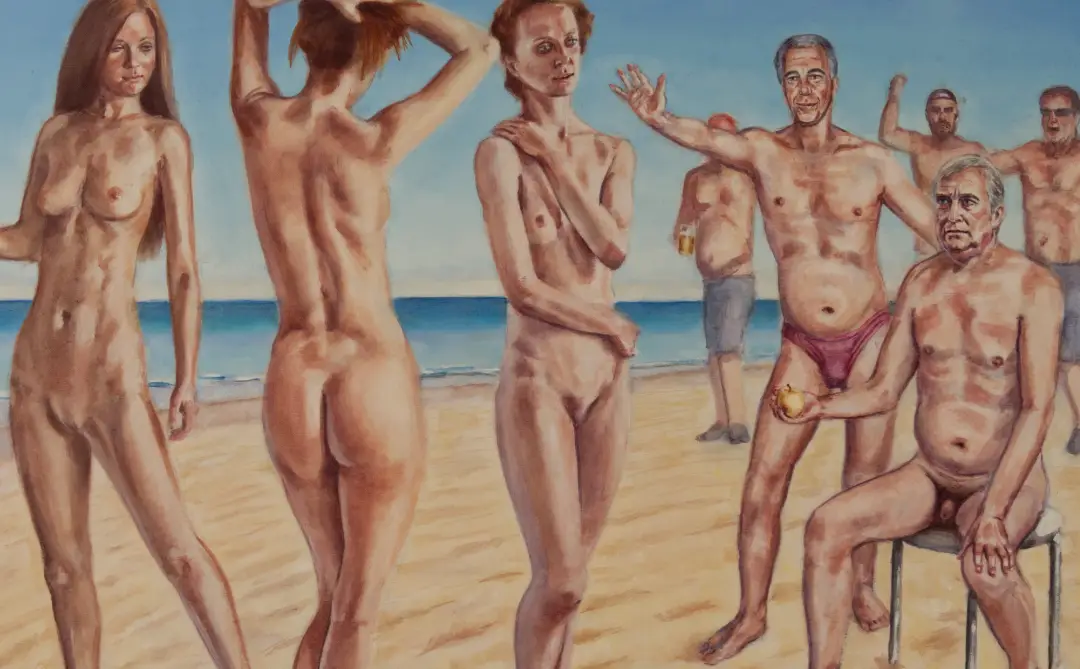
Misogyny and male menace are still pervasive in our patriarchal society. #metoo might not be on the frontpages now, but the underlying causes for the movement are still there. Recent court proceedings have put Prince Andrew and Jeffrey Epstein back into the headlines. They were the subject of my painting The Judgement of Men shown above.
You can see more of my paintings that deal with these issues here: Recent Work
Nakedness and Vulnerability
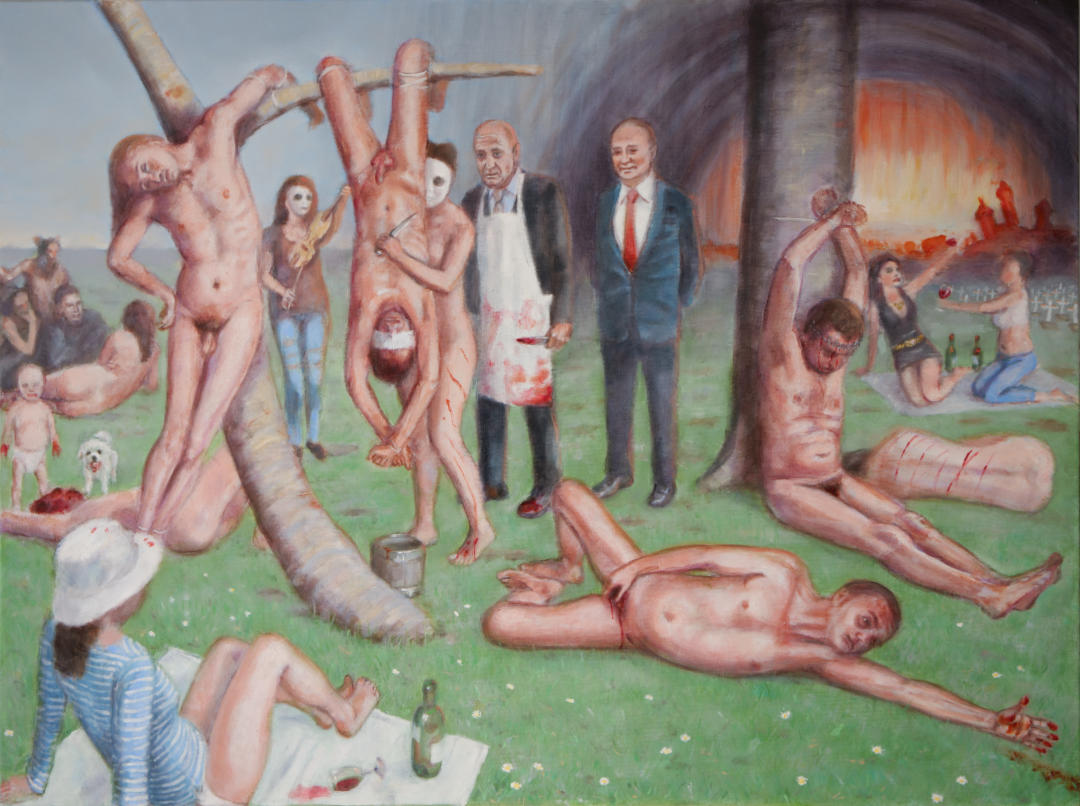
So why did I include so many naked figures in my latest painting The Disasters of War? The keyword here is naked. These figures are naked, exposed and vulnerable. Their nakedness has been forced on them as an act of humiliation and degradation.
But despite this and their terrible situation, they preserve a sense of quiet dignity; there is a beauty about them. The figure on the left is based on Rubens’ Christ Descending from the Cross.
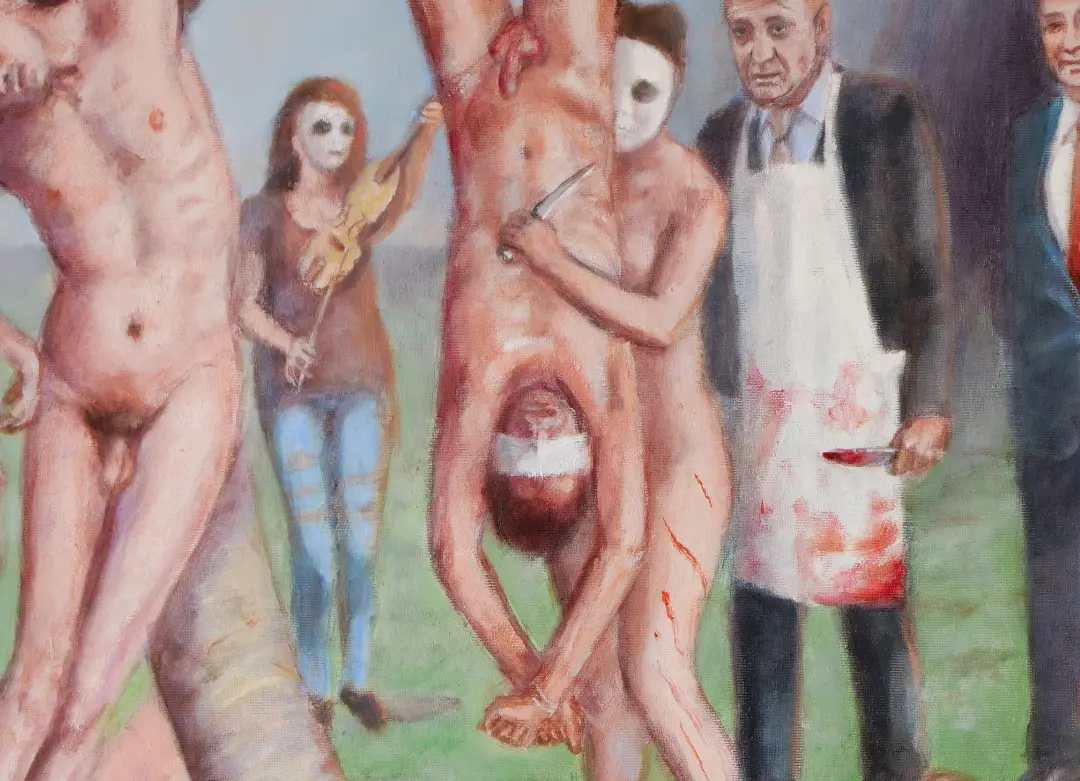
Although the naked figures are in no way sexualised, I wanted there to be an erotic undertone to the masked female figure wielding the knife. This alludes to the base instincts and urges that are feeding this awful war. When I witness the raptures of joy displayed with every killed soldier, I wonder just how close sex and violence are on the spectrum of primal instincts.
Male Menace and Future Work
The theme that I keep returning to in my recent work is male menace, and male objectification of women. These character traits (or flaws) have always been around. I cringe when I think about what was considered acceptable behaviour when I was young.
I have featured the likes of Prince Andrew in a number of my paintings, calling out his bad behaviour. But these paintings are really about all men. We are all culpable, including myself. This is why in my painting Men in Suits I included myself in the back, amongst the various sex pests and offenders. I also added a masked figure, who could well represent you, the viewer.
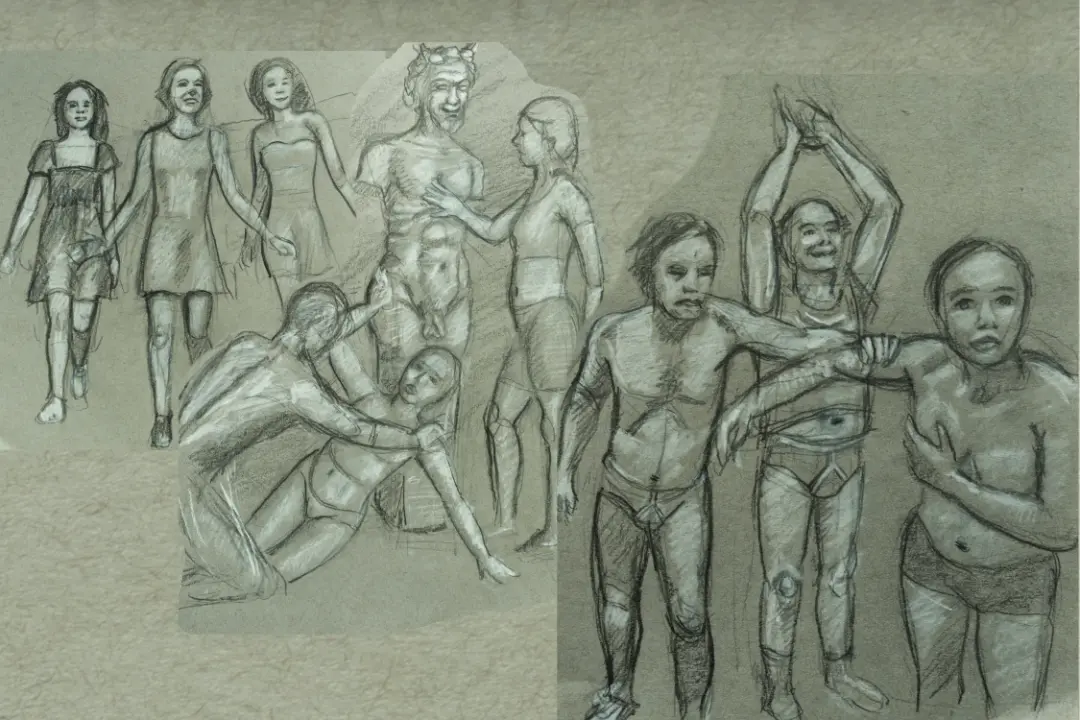
The layout above was my proposal for the Concord Art Prize – a competition for artworks inspired by a piece of music. My proposal was inspired by The Rite of Spring – a composition that has everything. Starting with a joyful innocence, it builds up slowly, ending in a dizzying climax – a frantic menacing finale. It was going to be the convergence of a number of themes that run through my work: beauty; sexuality; lechery; male menace.
It was disappointing that my proposal wasn’t accepted. I am confident that it would be an interesting project, and haven’t ruled out developing it further. I wrote more about the painting here: Rite of Spring
Pictures of People
The art that excites me most and the paintings that I like to create all feature people. I am fascinated with how artists over the years have depicted their sitters, whether it is a society portrait or a painting of a hired nude model. Although my most recent anti-war paintings may have intended to shock with their use of nudity, most of my earlier nude paintings were meant as sympathetic portraits. My art practice now is more focused on portrait painting, but going forward I don’t really see a clear distinction between that work and my paintings of the nude.
